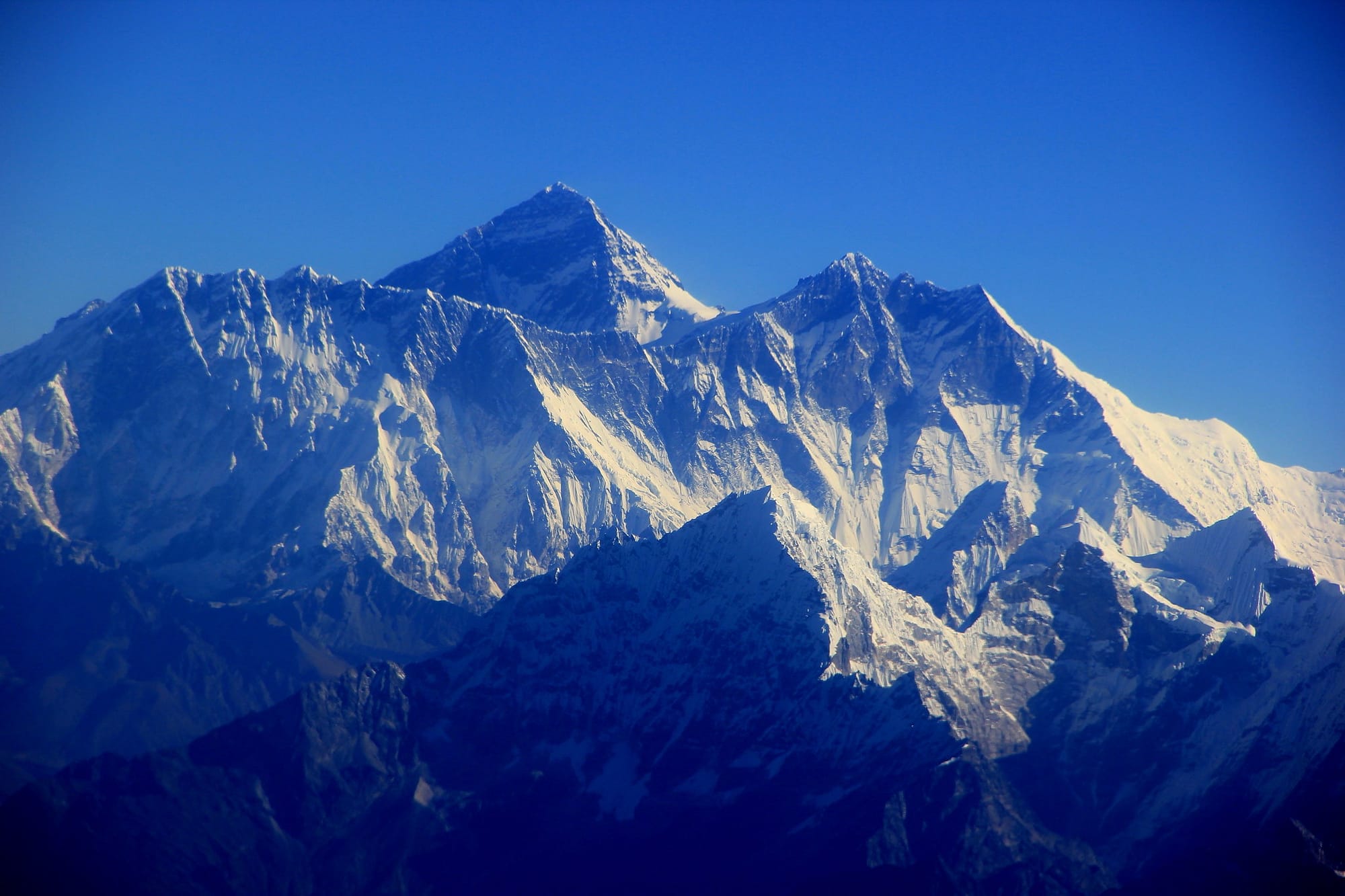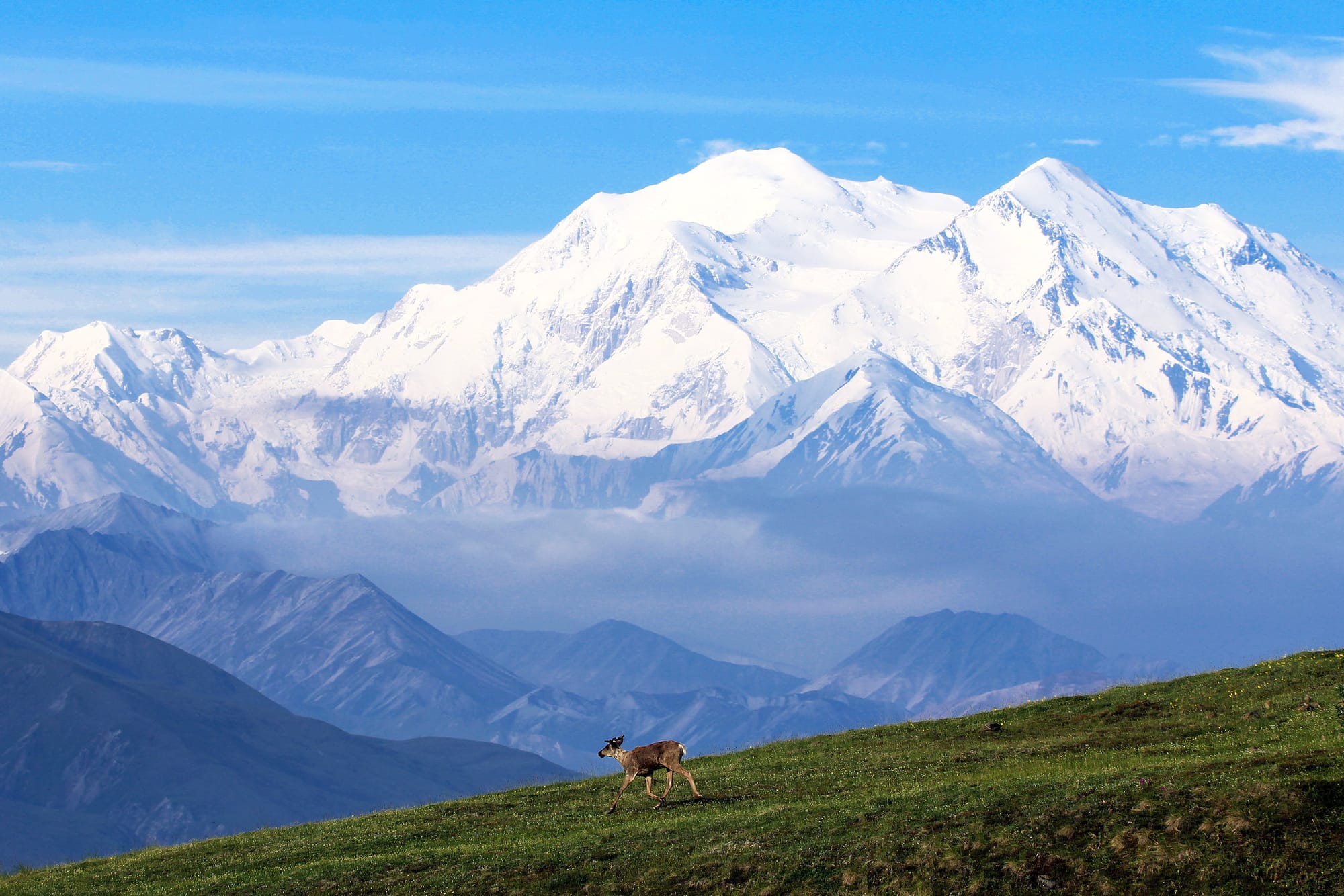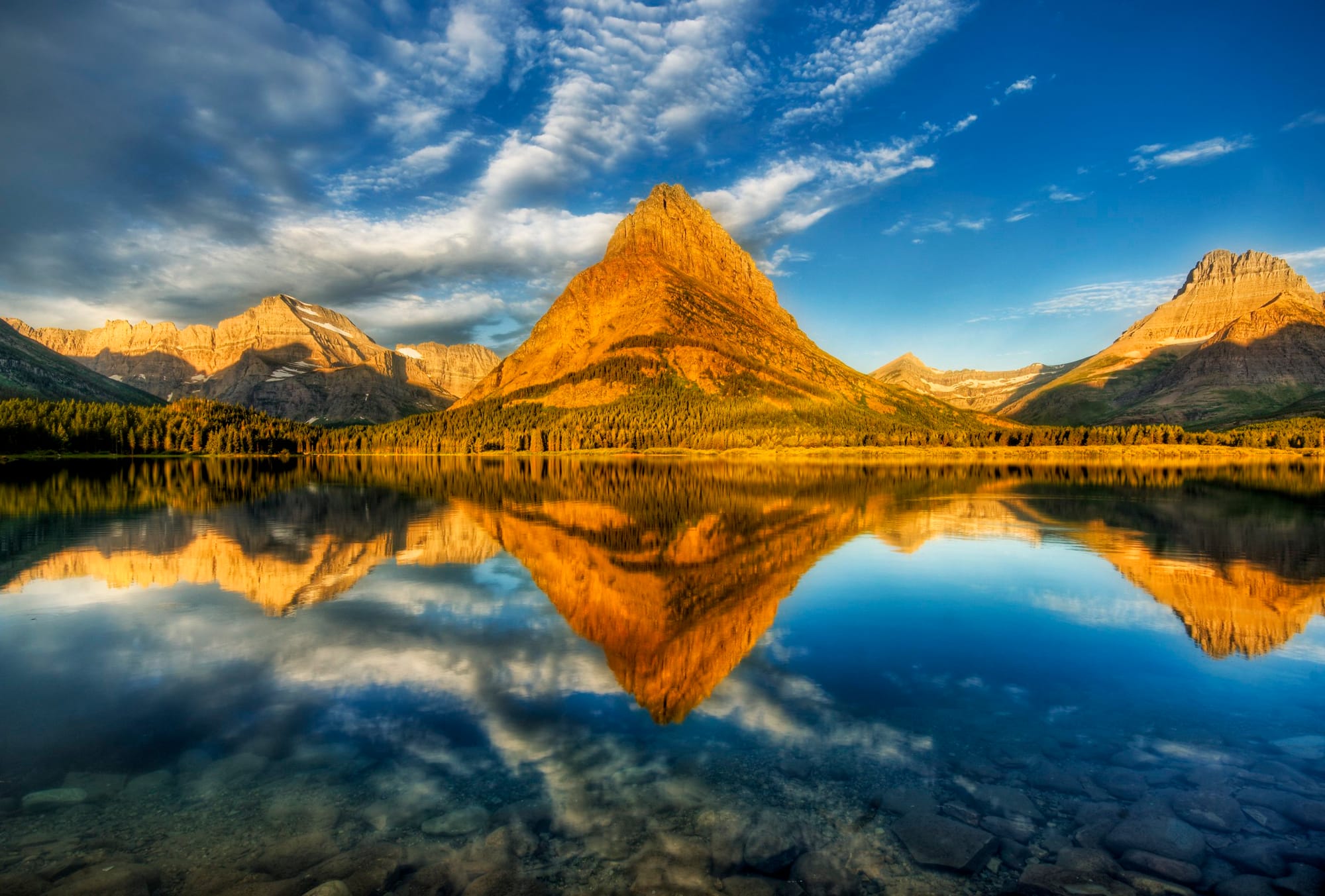This essay was originally published in September 2019. While much has changed in the intervening period, in many ways these words are even more relevant today than they were six years ago. In light of the Trump Administration's January 20 decision to change the federally designated name of North America's highest peak, Denali, to "Mount McKinley," it felt an apt time to re-share.
-Owen Clarke, editor-at-large
The word "Everest" inspires universal recognition and awe, but inform a group of friends of your imminent plans to summit "Chomolungma" or "Sagarmatha," and you will likely earn blank stares.
Though the world’s tallest mountain was Chomolungma ("Goddess Mother of the World") to Tibetans, and Sagarmatha ("Peak of Heaven") to the Nepalese for thousands of years before it was proclaimed Everest by Britain's Royal Geographical Society in 1865, today, much of the world knows this summit by its British handle.
George Everest himself objected to the moniker; he prioritized native names during his tenure as Britain’s surveyor general of India. Succeeding general surveyor Andrew Waugh bestowed his predecessor's unwilling surname to the world’s highest peak and wrote in a letter: "I was taught by my respected chief and predecessor, Colonel Sir George Everest, to assign to every geographical object its true local or native appellation. But here is a mountain, most probably the highest in the world, without any local name that we can discover, whose native appellation, if it has any, will not very likely be ascertained before we are allowed to penetrate into Nepal."
Upon "penetration" into the mountainous country with whom Tibet shares the Himalayan apex, colonial surveyors discovered that the mountain did, in fact, possess native appellations. Chomolungma is a nucleus of spiritual thought for the Sherpa people and they were suspicious of early British expeditioners—did the eager Europeans seek a mountaintop or precious minerals? The explorers in turn were amazed by the Sherpa people’s lack of a word for “summit.”

The grand uplift of limestone called Everest by any other name would be the tallest in the world. But names possess the power of signification. The erasure of indigenous names for popular natural formations uproots the cultural identity of native groups from the places they named centuries before the first European surveyors tagged landmarks with the surnames of their peers.
It may be the height of human vanity to suggest that a certain name is the "real" one for any natural formation; after all, these features formed millions, sometimes billions of years before our species existed. An ethos of humility is reflected in many indigenous names for landmarks, as opposed to the nomenclatural style of dedicating peaks to standout citizens.

Considering the historical and contemporary dispossession of land and livelihood of indigenous peoples by nation-states worldwide, elevating indigenous names to popular usage is one way to account for this legacy of erasure. Names carry associations, and in this sense we can encourage an indigenous identity of our natural landforms in a single word.
In the United States, contention over public land use is inseparable from indigenous sovereignty, as most public lands are ancestral tribal territories. The names of numerous natural formations reflect this reality: the Grand Canyon was Ongtupqa ("Salt Canyon") to its Hopi inhabitants; New Hampshire’s Mount Washington was Agiocochook ("Home of the Great Spirit") by the local Abenaki people; Mount Rainier was Tahoma or Takoma to the Lushootseed-speaking tribes of coastal Washington.

The Koyukon Athabascan people of Alaska won a high-profile fight in 2015 to restore the name Denali ("great one" or "high one"), in place of "Mount McKinley," to the state’s highest peak. According to Andrew Cowell, director of the University of Colorado’s Center for Native American and Indigenous Studies, returning to the name Denali is "symbolic of a renewed commitment to equity in our society, and a valuing of the contributions of indigenous people to America’s national heritage."
Cowell also points out that while disputes of this nature are often characterized as "white vs. native," the state of Alaska had already reinstated "Denali" in official documents and records. It was lawmakers from Ohio who opposed the reversion; they fought to uphold the McKinley moniker in deference to William McKinley, 25th President of the United States and an Ohio native. As recently as 2018, government officials from Ohio have petitioned President Donald Trump to change the peak’s official name back to McKinley.
(Editor's note: As we know, this has since occurred.)
Cowell cuts to the core of why we label: we want names to have meaning. "I think we want our place names to be connected to collective history and experience, and to derive from that local collective history and experience. In many cases, the original Native American names are the best expression of that ideal."
McKinley’s tenure as President during the gold rush in America’s "last frontier" and advocacy of the gold standard for American currency prompted a prospector to dub the mountain "McKinley." After his assassination in 1901, a mourning public supported the dedication of the peak in his name. The gesture was noble, but McKinley contributed little to the local history of the Denali area.
Cowell adds that Euro-American nomenclature is not inappropriate in every situation. Take, for example, Mills Glacier of Colorado’s popular Rocky Mountain National Park and Grinnell Glacier of Montana’s Glacier National Park. Naturalists Enos Mills and George Bird Grinnell were instrumental in the creation of the national parks in which they are honored by dedicated landmark names. While the natural formations may have carried established indigenous aliases, Mills and Grinnell earned official recognition by working to protect their respective landscapes.

We often forget that the official names of innumerable American locales are derived from indigenous words, including, for example, over thirty states, and major cities like Chicago and Miami. Kentucky is a derivative of the Iroquoian word meaning "of the field," and North and South Dakota are outgrowths of the Sioux dahkota ("friend" or "ally").
Indigenous nomenclature permeates the American landscape and populates the American lexicon, but the roots of state names are too often erased by time. Even if indigenous names for mountains and other landmarks were popularized, would they eventually lose their indigenous significations?
Cowell thinks that the naming and signification process is perpetual: "Place names have to be kept alive, as living, meaningful names, by the community—sometimes the local community, sometimes the national community."
It’s on us to elevate the context. "And sometimes, the very fight to get a renaming done means that those new names have staying power," Cowell continues. "The place is ‘renewed’ in a sense by a new name and a new story...thereby deepen[ing] our collective knowledge of history and help[ing] us reconnect to local perspectives."

There is no perfect fix, and to recognize one indigenous group’s name for a landmark may obscure many others. For example, the US Geographic Names System lists 36 variants of Native American names for Alaska's highest mountain. Names may not be destiny, but they do convey our ideas of the destiny of a cherished place. Imagine the newsreel of next year’s Everest season with "Sagarmatha" or "Chomolungma" in place of "Everest" in the headlines. Names beget stories. What’s in a name? The story of a sacred place, a displaced people, and a memory worth remembering.













